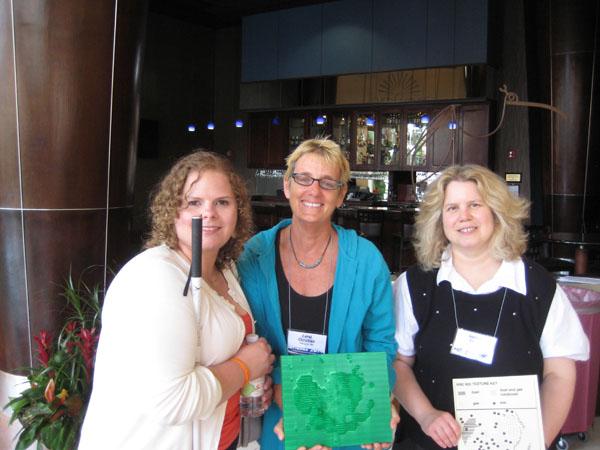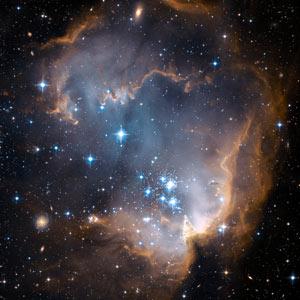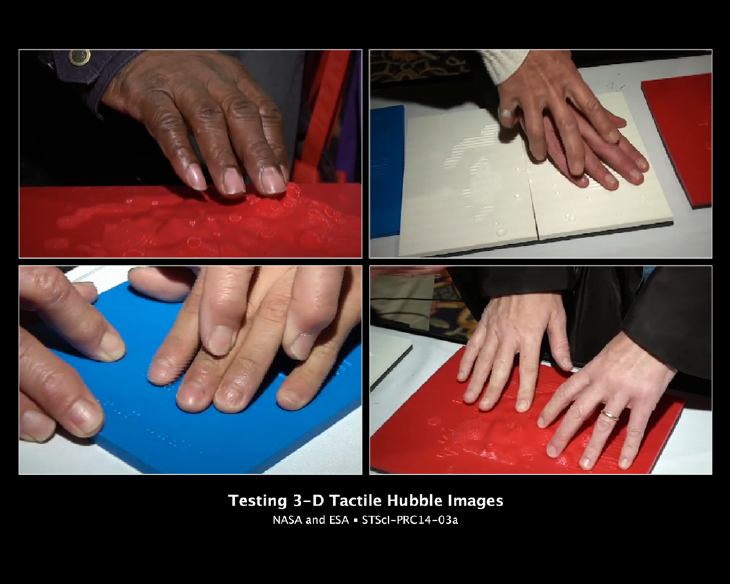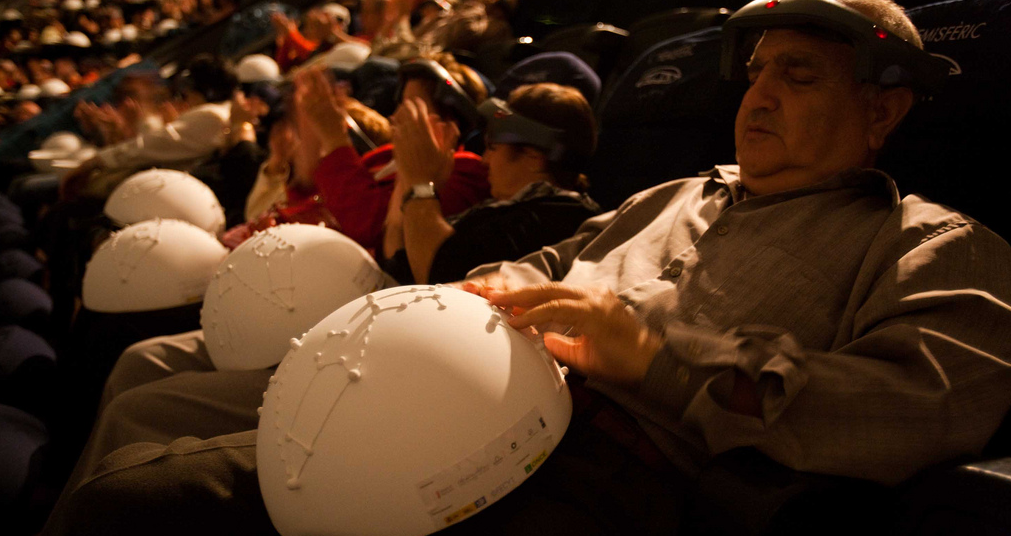With decades of research and design invested into the Hubble Telescope, which was finally launched in 1990, most of us have been able to reap the rewards of seeing the stunning results of NASA’s work. Orbiting earth, Hubble gives us a view of the universe that far surpasses anything we’d seen before. While the visually impaired could obviously experience having things described to them, some scientists wanted to make sure they were able to come closer to experiencing the scope of the unprecedented detail offered by Hubble.
Just as the Hubble has deepened our understanding of the universe, it has sparked many new ideas and theories—including this new one by astronomers Carol Christian and Antonella Nota of the Space Telescope Science Institute who received a Hubble education and public outreach grant that allowed them to buy a 3D printer last year.
In experimenting with 3D printing to enlighten the visually impaired with the sights of the Hubble Telescope in the form of textured 3D prints, the scientists enlisted the help of more than 100 volunteers of all ages from the National Federation of the Blind. Volunteers gladly submitted to testing different designs and giving their thoughts to the scientists, who then made changes and revisions accordingly. “We found we were able to create mental models for these people,” said Dr. Carol Christian. “They would say, ‘I can see it, I can see it,’ and then they would describe what they were seeing in their head.”
“Imagine making a visualization that you visually fly through, and as you fly through, first you encounter filaments, and then you see some dust and also some stars,” said Christian. “As you fly to the back side of the cavity, you see other features. I want to represent that in 3D and have people feel it with their fingers because they can’t see it.”
Turning images from NASA’s Hubble Space Telescope into tactile 3D pictures was a challenging project as they were doing something that had never been done before. The first image the researchers printed was the star cluster NGC 602 in the Small Magellanic Cloud, a neighboring galaxy to the Milky Way, which is a nest of stars, glowing blue, in a geode shape. Their ultimate goal is to 3D print a replica of the geode shape. That’s turning out to be quite the challenge as well though, as the Hubble does not see in 3D.
“You can measure the sizes and brightnesses of space objects from the images, as well as some of the distances. But it’s really hard to understand their 3D structure,” Antonella Nota added. “The work is scientific, but it’s also guesswork and artistry to try to produce an object, which printed, will look like the image that Hubble has taken. So, we are basically designing the process from scratch.”
The 3D printouts that they have produced are made of plastic. Similar in size to a sheet of notebook paper, the textures on the printouts meant to be stars, gas, and dust are represented by shapes such as circles, lines and dots. Various heights are meant to describe differing degrees of light.
Christian and Nota enlisted the help of other experts on this project, including Perry Greenfield, manager of the Space Telescope Science Institute’s science software branch, who developed software to translate measurements from Hubble images into data the 3-D printers could successfully print. Also on board was Noreen Grice, an author of several tactile astronomy books, helped select the textures, as her background is in making astronomy available to the vision impaired.
The 3D prints are interesting from any point of view, whether you are visually impaired or not, and the scientists point out that the 3D printed textures could always benefit those who have different styles of learning. Ultimately, Christian and Nota hope to create 3D files of every Hubble image, making all of them available to schools, libraries and members of the general public who have 3D printers. “Our ultimate goal of having the 3D image files available to everybody is for the long-term future,” Nota said. “But you have to think big when you’re doing something like this.”
Our need to discover space has been as essential as our explorations on land and sea, and such a vast source of scientific inspiration and innovation—which should be available to everyone. Do you follow the information being sent by the Hubble Telescope? Do you know anyone who is visually impaired and would enjoy the 3D printouts described here? Let us know in the 3D printed Hubble Images forum thread at 3DPB.com.
Subscribe to Our Email Newsletter
Stay up-to-date on all the latest news from the 3D printing industry and receive information and offers from third party vendors.
You May Also Like
3D Printed Heat Spreader Could Improve Efficiency of Electronics
The low-hanging fruit for decarbonization has long been improving the efficiency of existing systems, hence the justification for LED lights and ENERGY STAR certified appliances. While such minor moves are...
3D Printing News Unpeeled: Marine Gearboxes, 3D Printed Motors and $1.7 Million in Seed Funding
UK based Equipmake just released their Ampere-220 e-axle system. The system, which is meant for high performance electric cars, was similar to one released on the Ariel HIPERCAR. It has...
CEAD Unveils 36-Meter-Long 3D Printer for Abu Dhabi’s Al Seer Marine
CEAD, a Dutch original equipment manufacturer dedicated to large-format 3D printers, has unveiled what it claims to be the world’s largest robotic arm-based 3D printer. At 36 meters long and...
3D Printed Biocomposites Could Help Reduce Marine Plastic Pollution
Concerns about the impact of plastic litter and microplastics in the oceans are at the forefront of environmental study. For decades, the marine environment has suffered from the degradation of...









































